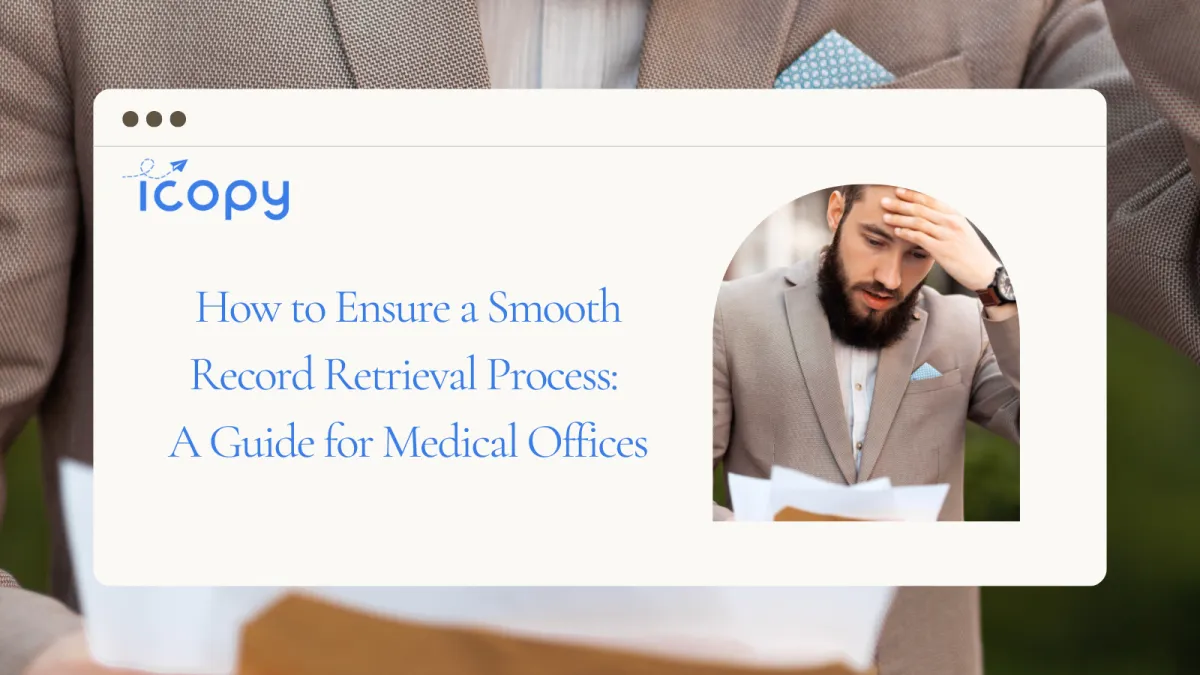Blog
Your inside news on record retrieval for legal firms - plus business tips to help scale your practice.

How to Ensure a Smooth Record Retrieval Process: A Guide for Medical Offices
In the day-to-day operations of a medical office, handling subpoena requests for records can sometimes feel overwhelming, especially if you're not familiar with the legal side of things. But don't worry! This guide is here to walk you through the process, making sure you know exactly what to do to ensure a smooth and efficient record retrieval experience.
Understanding the Subpoena Request
The first step in handling a subpoena for records is to carefully review the specific details of the request. Here are a few key points to keep in mind:
Clarify the Scope of the Request:
Is the request asking for all available records within a certain time frame, or is it looking for specific types of information? For example, it might be a request for all treatment records from January 2022 to December 2022, or it could be more specific, such as records related to a particular procedure or diagnosis.
Being clear on what is required will save time and help avoid the need for follow-up requests.
Check for Specificity:
Pay attention to any particular details mentioned in the subpoena. Sometimes, the request might specify the type of detail needed, such as billing records, imaging results, or physician notes. Understanding these specifics will ensure you gather exactly what's needed.
Completing the Affidavit or Certificate
Once you’ve gathered the necessary records, the next crucial step is completing the affidavit or certificate that accompanies the records. This step is vital for the legal process, and here’s why:
Fill Out All Required Information:
The affidavit or certificate must be completed in full. This document certifies that the records provided are accurate and complete. In some states, this form must be notarized, so be sure to check if a notary is required in your state.
Why It's Important:
A properly completed affidavit can significantly reduce the likelihood that anyone from your medical office will need to appear in court. Judges rely on this certification to confirm that the records are legitimate and trustworthy, which can prevent the need for additional testimony.
Sending Records: Why Digital is Better
When it comes time to send the records, consider the method of delivery. Here’s why sending records digitally is often the best option:
Security and Speed:
Sending records electronically helps ensure they reach their destination quickly and securely. This is especially important for maintaining HIPAA compliance, as physical records sent via mail can sometimes be lost or delayed in transit.
Tracking and Confirmation:
Digital delivery allows for easy tracking and confirmation of receipt, providing peace of mind that the records have safely arrived at their intended destination.
Conclusion: Making Record Retrieval Simple
By following these steps—clarifying the scope of the request, thoroughly completing the affidavit or certificate, and opting for digital delivery whenever possible—you can ensure a smooth record retrieval process in your medical office. Not only does this approach save time, but it also reduces the risk of errors and helps maintain compliance with legal and regulatory requirements.
At iCopy Legal, we're here to support medical offices in managing record retrieval efficiently and accurately. Whether you need assistance with the retrieval process or guidance on handling subpoenas, our team is ready to help. By partnering with us, you can focus on what you do best—providing excellent care to your patients—while we handle the rest.
Copyright © 2023 iCopy Legal

